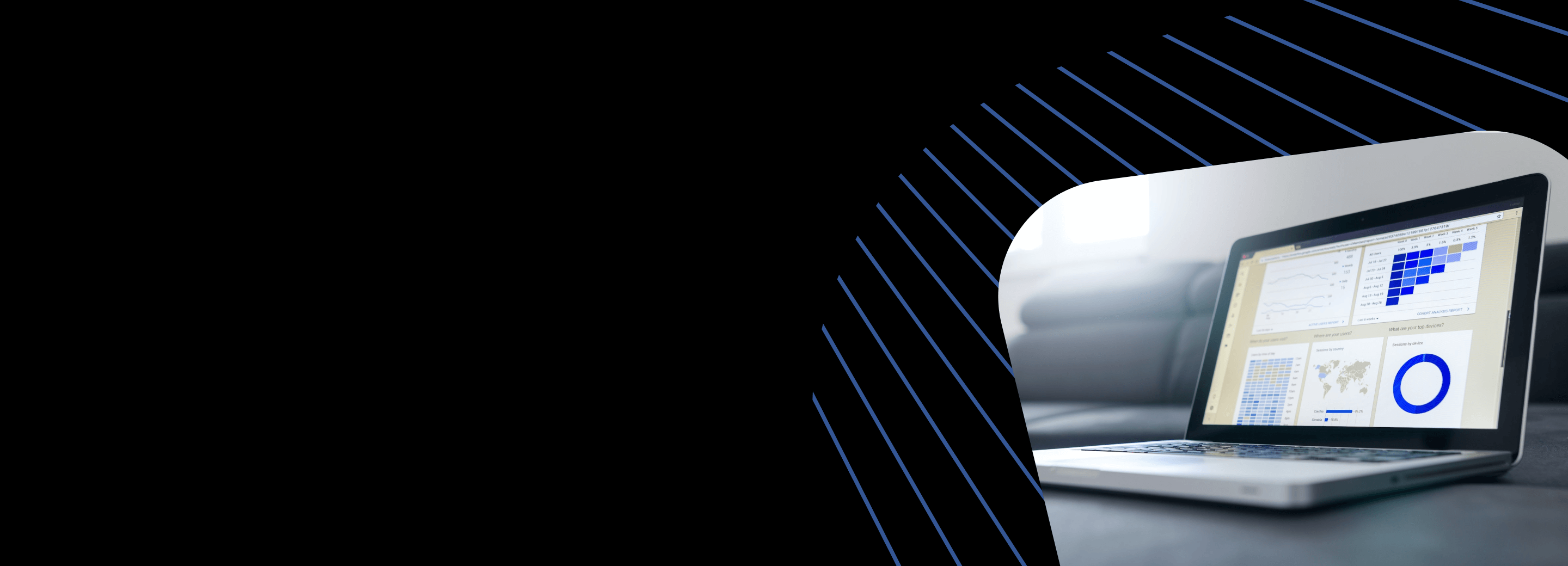
Building best in class customer facing dashboards
Customer and/or partner-facing dashboards are an essential BI (Business Intelligence) tool for any organization that’s looking to provide their clients with relevant insights about their products or services or generate new revenue streams from their data products.
These dashboards could be used to display key performance indicators (KPIs), business metrics, or other important data that can help their customers make informed decisions.
And, as the demand for customer-facing dashboards continues to grow, businesses are increasingly turning to open-source technology to build them.
However, whilst open-source technology offers a range of benefits over proprietary software, including cost-effectiveness, customizability and scalability, it’s vital, given that these dashboards are presented to paying customers, that the UX is simple and easy to use, beautiful to look at, they’re secure and they don’t crash every fifteen minutes.
Can open-source really achieve all that?
One of the primary advantages of using open-source technology is its cost-effectiveness.
Building modern, cutting edge dashboards with open-source tech, businesses can massively reduce their licensing fees and other costs associated with proprietary software.
That’s especially beneficial for small businesses and startups that often have limited budgets or resources to spare.
Open-source technology is also highly customizable, with entire communities dedicated to producing add-ons, extras, updates and troubleshooting… often for free.
It’s also, normally, designed to be modular, meaning it can be more easily customized to meet the specific needs of the business or start-up, resulting in more tailored and effective dashboards to better meet the end needs of customers.
As well as the cost-effectiveness and customizability of open-source tech though, it’s also extremely scalable, meaning it can handle large amounts of data and accommodate increasing levels of traffic, which makes it an ideal choice for businesses that anticipate growth or fluctuating traffic levels.
In this article, we’ll talk about:
Benefits of using open-source tech for your customer-facing dashboards
Let’s expand on those points a bit though to really drill down and understand the benefits of why organizations should be using open-source tech to build their client-facing dashboards.
- Cost-effectiveness: One of the primary benefits of using open-source tech is its cost-effectiveness. Open-source software is normally available for free, which significantly reduces the cost of developing data storage solutions and their associated dashboards. As we already said, that’s especially valuable for businesses with limited budgets or those that need to allocate resource elsewhere.
It’s not just the initial cost savings though.
Open-source technology solutions also result in lower ongoing maintenance costs. As it’s developed and maintained by a community of developers, businesses can typically avoid the costs associated with proprietary software licenses and ongoing maintenance fees.
-
Customizability: This is one of the other great benefits of using open-source tech to build customer-facing dashboards. Open-source software is normally designed to be modular, which means it can be easily customized to meet the specific needs of a business rather than shoehorning in proprietary software that works out-of-the-box but typically can’t be modified.
-
Scalability: Open-source tech is incredibly scalable, meaning it can handle large amounts of data whilst easily accommodating increasing levels of traffic. This can be especially valuable for businesses that anticipate growth or have fluctuating traffic levels. For example, if a business experiences a sudden surge in traffic from one of their clients, an open-source dashboard can easily be designed to handle that increased load without requiring additional resources or upgrades… What businesses providing customer facing dashboards can’t have is them going down with an unexpected surge of data. This the scalability of open-source avoids downtime and the resulting reputational damage.
-
Community support: Open-source technology is typically supported by a large community of developers who can provide assistance and help troubleshoot any issues… often for free as the software will be a passion project. This is especially valuable for businesses that lack in-house development resources. If a business encounters a bug or needs help implementing a specific feature, they can often find answers or support through online forums or developer communities, thus avoiding costly downtime or delays and ensuring their dashboards are always functioning at their best.
By leveraging these benefits and following best practices for dashboard design and development, businesses and start-ups can create effective dashboards that provide their customers with valuable insights and help them make informed decisions.

DoubleCloud Visualization
A simple free of charge service for visualizing your data.
Best practice for designing and developing customer-facing dashboards
Designing and developing customer-facing dashboards requires careful consideration of several factors to achieve best practice:
-
(K.I.S.S) Keep It Simple Stupid: The dashboard should be easy to understand and navigate. Avoid cluttering it with too much information or complex visualizations.
-
Define the purpose and audience: Before designing a customer-facing dashboard, it’s important to clearly define its purpose and target audience. This helps ensure it effectively communicates the relevant insights to customers. A dashboard designed for a c-suite exec for example might need to focus on high-level metrics and provide a big picture view of business performance, whilst a dashboard designed for a sales team might provide more granular insights into sales data and pipeline activity.
-
Use meaningful metrics: The metrics displayed on the dashboard should be relevant to the customer’s needs to help them make informed decisions.
-
Choose the right visualizations: Choosing the right visualizations is critical to effectively communicate insights to customers. Visualizations should be clear, easy to understand, and relevant to the data being displayed. Line charts can be useful for showing trends over time, whilst bar charts can be effective for comparing different data points. When selecting visualizations, it’s important to consider the audience and ensure they are able to easily interpret the information being displayed.
-
Provide context: The dashboard should provide context for the data displayed. This can be achieved through the use of labels, captions, and other explanatory elements. Context can also be provided by including timeframes or filters that allow customers to drill down into specific data points or time periods. This can help ensure customers can accurately interpret the insights being presented and make informed decisions.
-
Make it visually appealing: The dashboard should be visually appealing and use colors and visualizations that are easy on the eyes.
-
Test and iterate: Once the dashboard is developed, it should be tested and refined based on customer feedback.
We discuss these points more in-depth in a webinar you can find here.
However, the above are all best practices for both internal and customer facing dashboards.
When building customer facing dashboards there’s a few other items to consider.
We can’t stress how important it is that the UI and UX is simple and easy to use as your customers will want to be able to generate BI at from their dashboards at the touch of a button.
It’s also important you aim for 99.9% uptime as your customers will be relying on you and dashboards that don’t work create serious reputational harm.
Finally, once your dashboards are ready, your customers will need a way for them to embed them in their reports, websites, intranets etc. for maximum usability.
In conclusion, building best-in-class customer-facing dashboards requires a combination of design and development skills, as well as a deep understanding of the customer’s needs.
By leveraging open-source technology and following best practices, businesses can create effective dashboards that provide customers with valuable insights and help them make informed decisions.

DoubleCloud Customer-facing Analytics
Start your trial today



